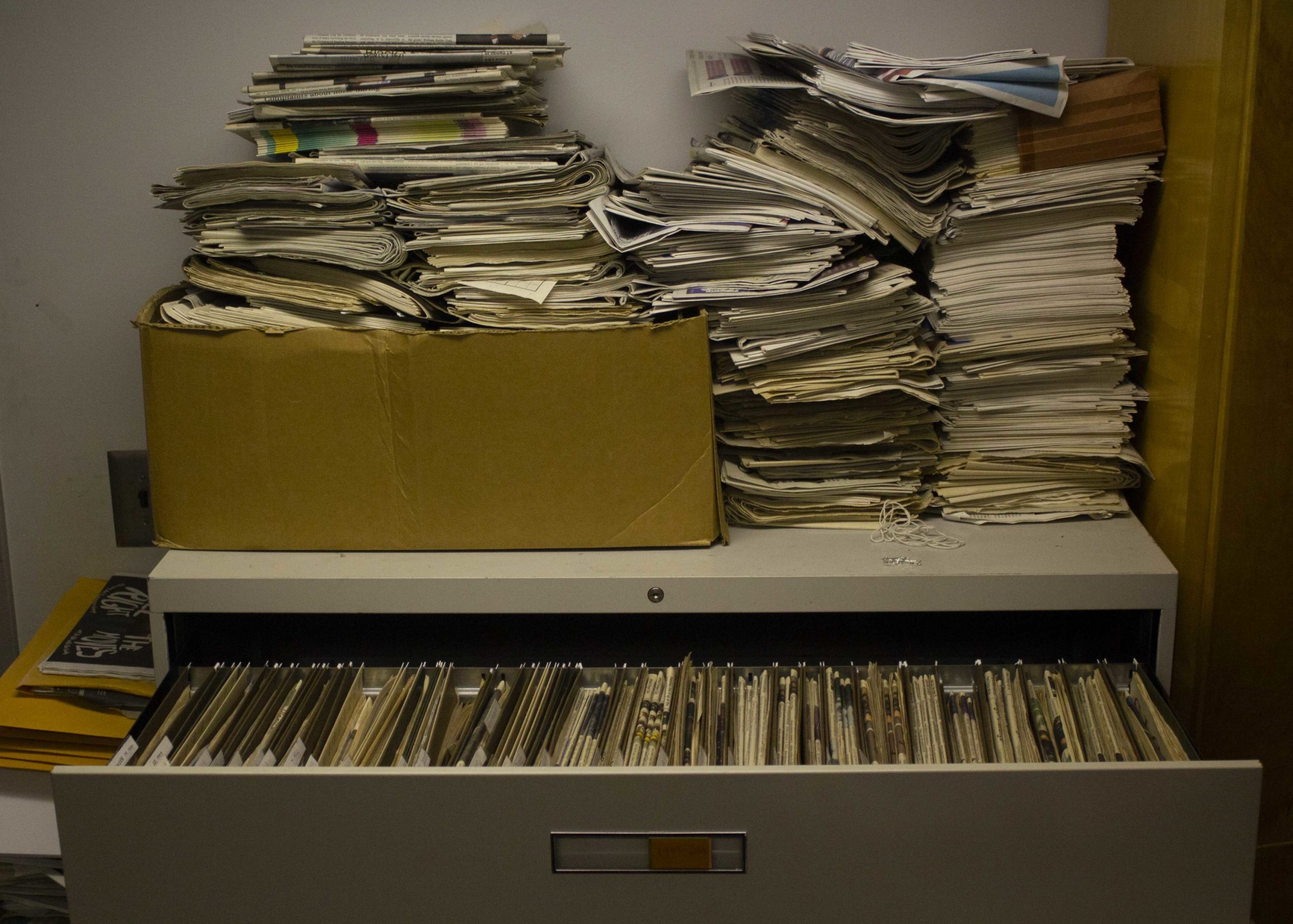
I spent three years working at The Signal from 1986 to 1989, the last year as editor-in-chief, and aside from the fight we got into with the dean of communication (more on that), the biggest controversy we saw was over the basketball team’s uniforms. Rather than use the official red and gray, the athletic director at the time thought plain blue on white would help distinguish Georgia State from the University of Georgia and Georgia Tech.
He didn’t account for the alumni and the school administration, though, and after considerable wrangling, a compromise was reached. The uniforms stayed blue with a little red pinstriping, and the team name was changed to the Crimson Panthers. A new panther mascot was created, dubbed Urbie (for The South’s Premier Urban University, as the school styled itself). Urbie made it to Georgia State’s first NCAA tournament game in 1991 (a shellacking by Arkansas in the old Omni arena), before he and the Crimson Panther name were quietly dropped in 1993.
It’s not that there weren’t more important issues. It’s just that the late 1980s were an apolitical time for U.S. college students, and at Georgia State in particular. There were no dorms then, and virtually no downtown apartments. I lived in Ormewood Park and drove or took the bus. The campus stretched from the Urban Life Building to LangdaleHall (then called the new science classroom building). Edgewood Avenue was the north boundary, and the GSU Sports Arena (then doubling as the student gym and rec center) was the south.
Georgia State’s main identity was the College of Business, with its celebrity dean Michael A. Mescon. Culturally, the place was closer to its origin in 1913 as the Georgia Tech Evening School of Business than to today. The average student age was about the same, but there were fewer teenagers and no one over 40 who wasn’t taking MBA night classes. Most undergraduates were transfers or returning to school after working.
And while Georgia State was then the most diverse of Georgia’s four research universities, “diverse” was a relative term. Only 16 percent were African-American, less than 15 percent combined were Latinx or Asian, and nearly three-quarters of the students were white. This was when the city of Atlanta was about 70 percent African-American. There were creepy, lingering ills on campus associated with that imbalance, such as a segregated sorority rush (until The Signal interviewed some women, who objected to being racially sorted and got it abolished).
Georgia State was making efforts, like hiring a black woman as Dean of Communication. She stepped into a row between the students who paid for the Drama Club with their activity fees, and the long-time theatre director who wasn’t interested in it being a democracy. The newspaper (me, basically) came down on the side of the insurgents too heavily and considerable feelings were hurt before the feud blew over. At one point, I think she called us “uppity.” The newspaper advisor, George Greiff, stuck with us even when we were wrong, and the dean, to her credit, didn’t pressure us.
Greiff was a former copy desk chief at The Atlanta Constitution and was typical of the journalism faculty in having a long professional career before turning to academia. There were very few Ph.D.s teaching my journalism classes, but you couldn’t get better practical training. That’s one thing that seems much the same among the instructors teaching me to make films and TV now. There are a lot of years on set among my professors.
The students today seem more distracted, but more sensitive than I remember—more politically and socially aware, but a bit less permitted to take charge of something without an “adult” around. Far more networked (I got my bachelor’s four years before I had my first email address), but with a less opportunity to land a full-time job upon graduation the way I was lucky enough to do.
And Georgia State seems a lot more connected to its urban footprint today. One last example from 30 years ago: We had an argument at the newspaper about comedian Jay Leno coming to campus to perform his standup act. One of our black staffers, columnist Hank Ernest, said that musician Bobby Brown would be a more popular act. He’d win that argument easily today. But, Leno was the one who came.
